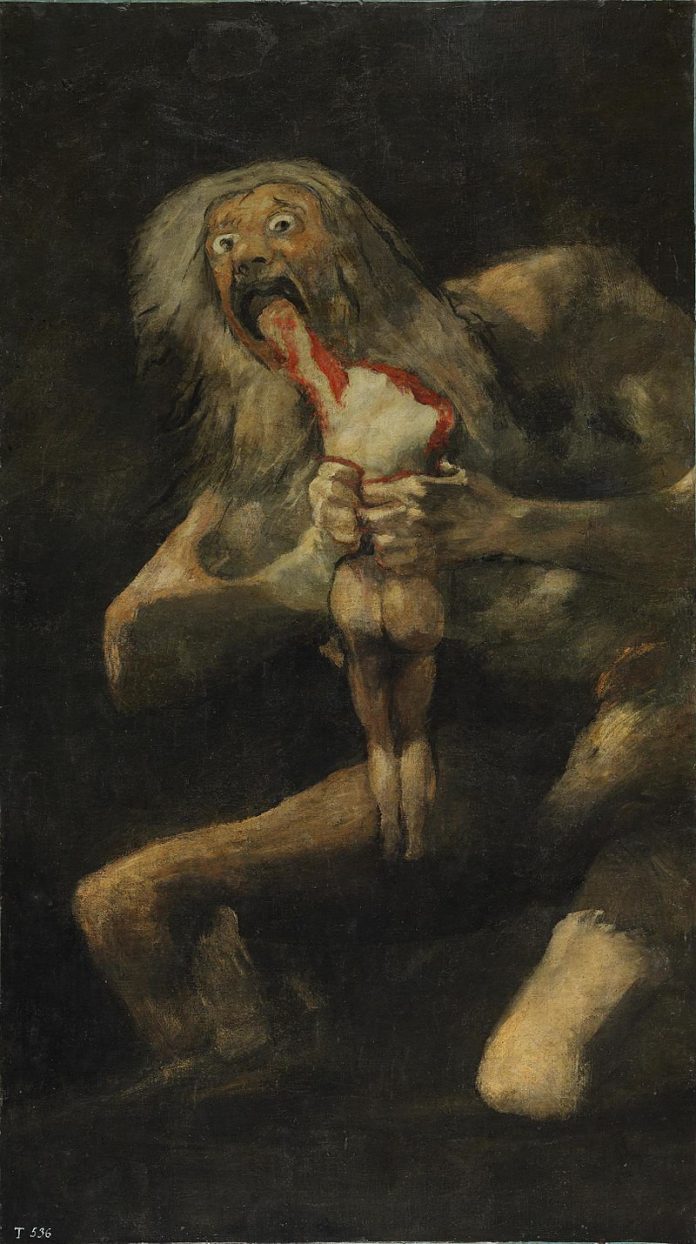In the life of the great Francisco Goya, there was a period when he became a recluse. The bright master of the Romantic era fenced off the world and created his “Black Paintings”, fourteen frescoes that Goya painted on the walls of his own house. He depicted “Saturn Devouring His Son” in his dining room. The artist did not tell anyone about these works and was not going to show them. Ironically, they became his most famous work, causing even more interest than the “Nude Maja”. This video essay is dedicated to the “terrible” masterpiece of the great Spanish painter.
Artists often turned to the history of Saturn (in Roman mythology) or Cronus (in Greek). He ate his newborn children, learning the prophecy that he would be overthrown by his own child, who would appear in the future. Despite cannibalism, the painters depicted Kronos with a classical, heroic build. Goya painted in the same style at the beginning of his career, but Saturn in his version is a bearded man-beast caught devouring not a child but an adult. In his widely opened wild eyes can be read shame, horror, blood lust, and madness.
In addition to “Saturn,” Francisco Goya wrote another 13 frescoes on dark themes: old age, monsters, witches … About 50 years after the death of the artist frescoes remained unknown to the public. Only in 1874 began a long and painstaking transfer of wall paintings on canvas. They are kept in the Prado Museum in Madrid, where they fascinate the audience to this day.
We will never know exactly why Goya painted them and what was going on in his head when he depicted his “Saturn”. Evan Pushchak published a video essay on his YouTube channel Nerdwriter, where he reviews Francisco Goya’s work during that difficult period for both the artist and his country. According to the columnist, this is the most disturbing picture in art history. The video is subtitled in Russian (you can select them in the settings), as well as the decoding below.
Which painting in the history of art is the most frightening? There are such strong candidates as Gerard David’s “The Judgment of Cambyses”, Hieronymus Bosch’s “Hell” (triptych “The Last Judgment”), Henry Fuseli’s “The Nightmare”, Edward Munch’s “The Scream”. In fact, there is only one painting that seriously alarmed me. Here it is: “Saturn Devouring His Son” by Francisco Goya. What you see here is the famous picture of titanium Cronus, made by a Spanish artist. After the usurpation of his father’s power, he was given a prophecy that one of his children would do the same and overthrow him.
To prevent this prophecy, Cronus swallowed each of the children born to him by Rey. Unfortunately for him, Rei decided to hide her younger son Zeus. In the end, he fulfilled the prophecy of the overthrow of his father and put an end to the domination of titans.
This story is a well-known Greek myth, but look at how Goya shows it. Some key changes are immediately noticeable. First, in the myth Cronus devours his children, swallowing them whole. In fact, they remain alive in his stomach. Goya’s painting is much more terrifying. He draws inspiration from Peter Paul Rubens, a Flemish painter, one of the founders of Baroque art, who depicted the same event. In Rubens’ Saturn, titanium seems to be sucking out the vitality of its child. Even for such a terrifying theme, Rubens shows all the drama, richness, even beauty, highlighting the Baroque style, which he helped to become famous.
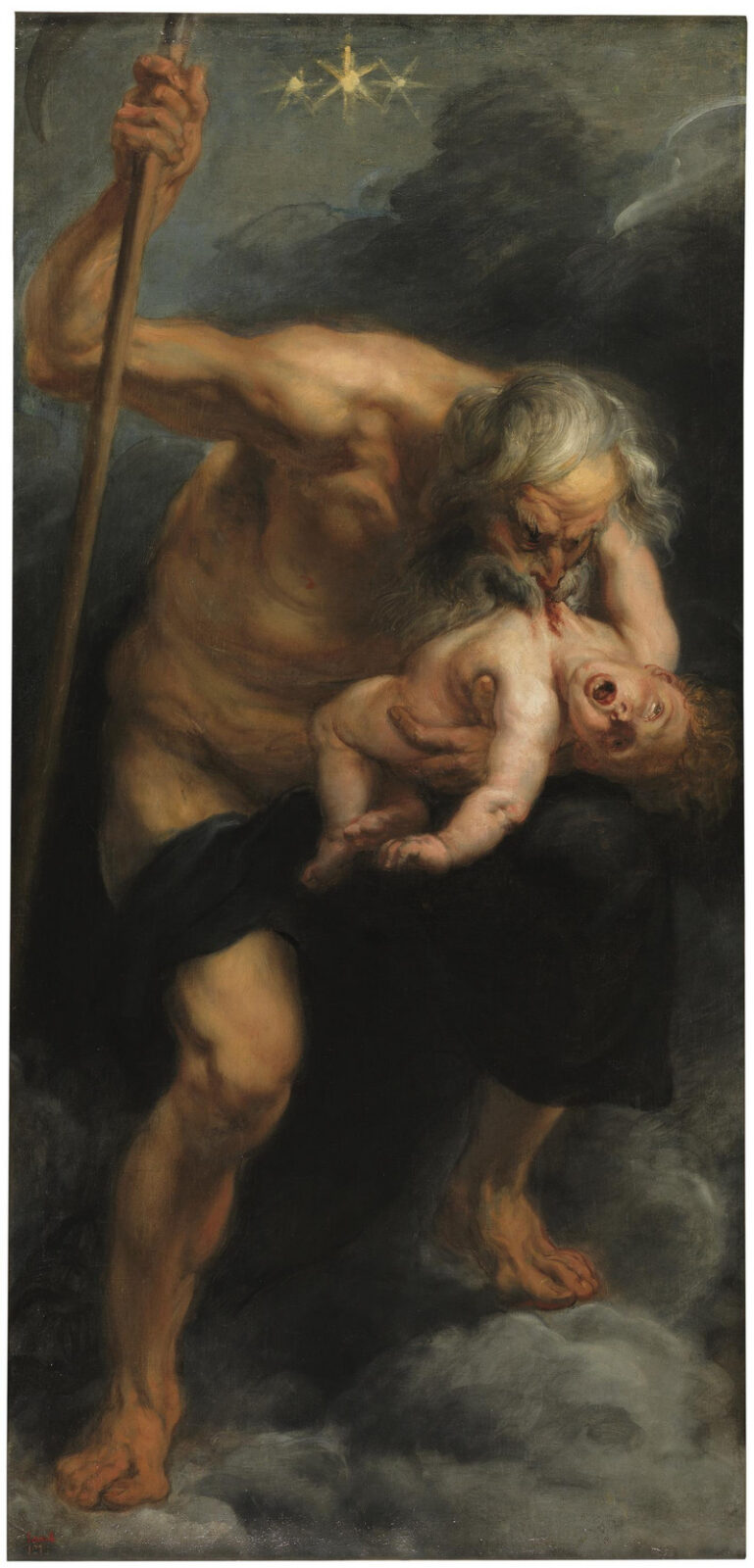
In Goya’s version, this beauty has disappeared. We are left with a frightening mad monster as if discovered in the dark by a random explorer with a torch wandering inside the wrong cave. Saturn, the Roman name of Cronus, has just eaten the head of his child. His black mouth opens near the elbow of his left hand, ready to bite off the joint. His angular body is crouching in an uncomfortable position, his hands digging into the spine, blood flowing down the hand, neck, and shoulder of his child’s strikingly primary color. And if we look closer, we will notice that it is not quite a child. One of Saturn’s children has grown up. There is something terrifying about the fact that the victim knew what was happening and tried to resist.
But the most disturbing thing I think about is when and where this painting was found. At the end of his life, Francisco Goya bought a house on the edge of Madrid “La Quinta del Sordo”, which means “Villa Deaf”. This was the name given to the house by its previous owner. It is an interesting coincidence because at that time Goya was also deaf. His physical and mental health has deteriorated significantly, Goya created 14 wall paintings, which are often referred to as “The Black Paintings”. Right on the inside walls of his house.
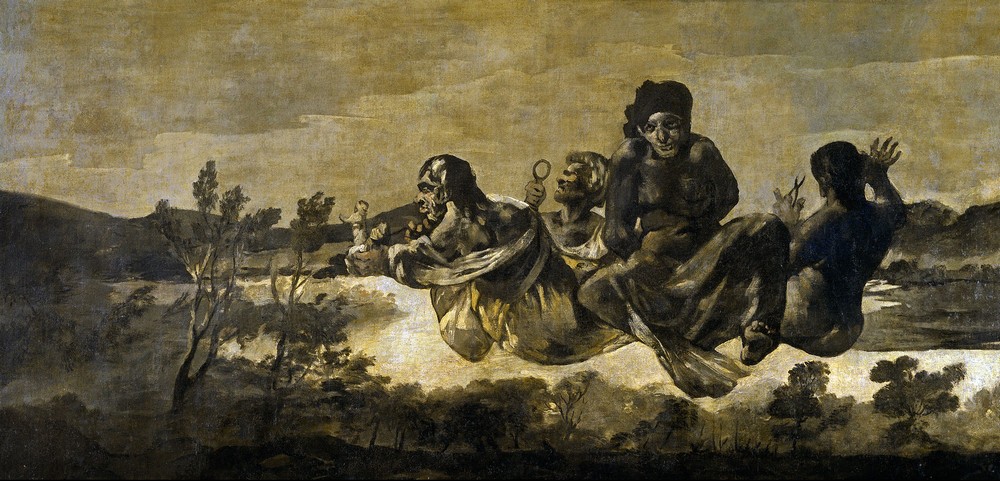
“Saturn devouring his son” was in the dining room. The pictures you see now were taken 50 years after the frescoes were painted. Goya never mentioned them. He never intended to show them to anyone. But to this day, people are still trying to understand the meaning of “Black Paintings”. Why did Goya create these pessimistic and fantastic scenes alone in his home? Perhaps in order to understand this, you should understand the career of an artist.
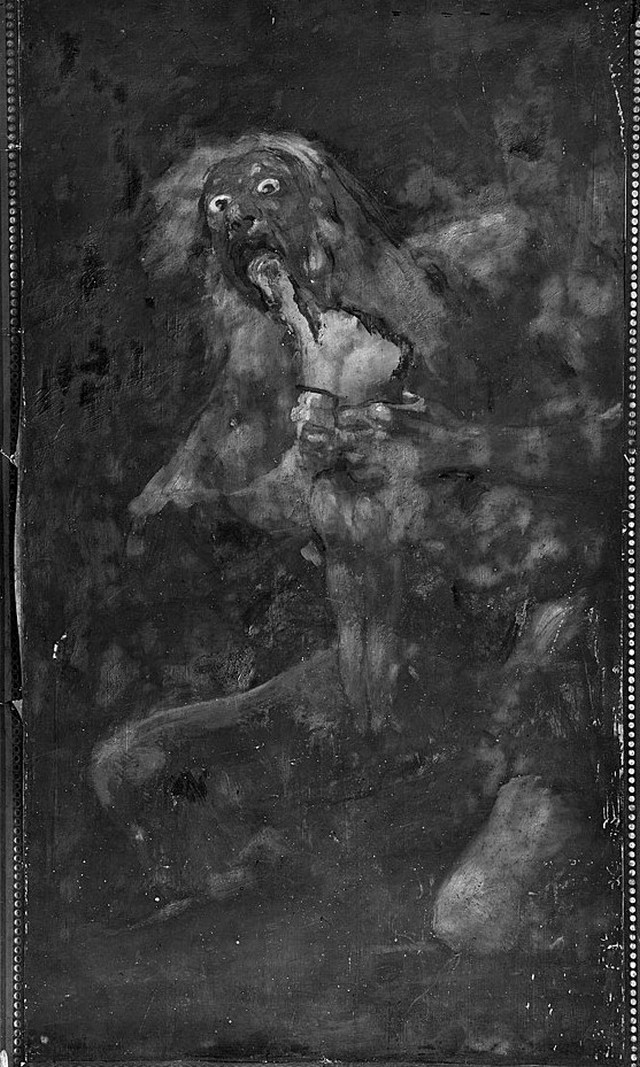
He grew up in Zaragoza, Spain, the fourth of six children in a small bourgeois family. He said he was a carefree and joyful young man when he studied painting in Zaragoza, Madrid and Rome. His first serious work was in the carpet factory, where he created tapestries to decorate palaces and noble houses of the city. These tapestries are made in the Rococo style. Elegant, playful, light rest scenes of noblemen and peasants, enjoying the typical activities of their time. As a result, Goya became the court painter of King Charles IV, the disappointing monarch, in contrast to his father Charles III, loved by the people for the reforms that began to bring secular educational values to Spain.
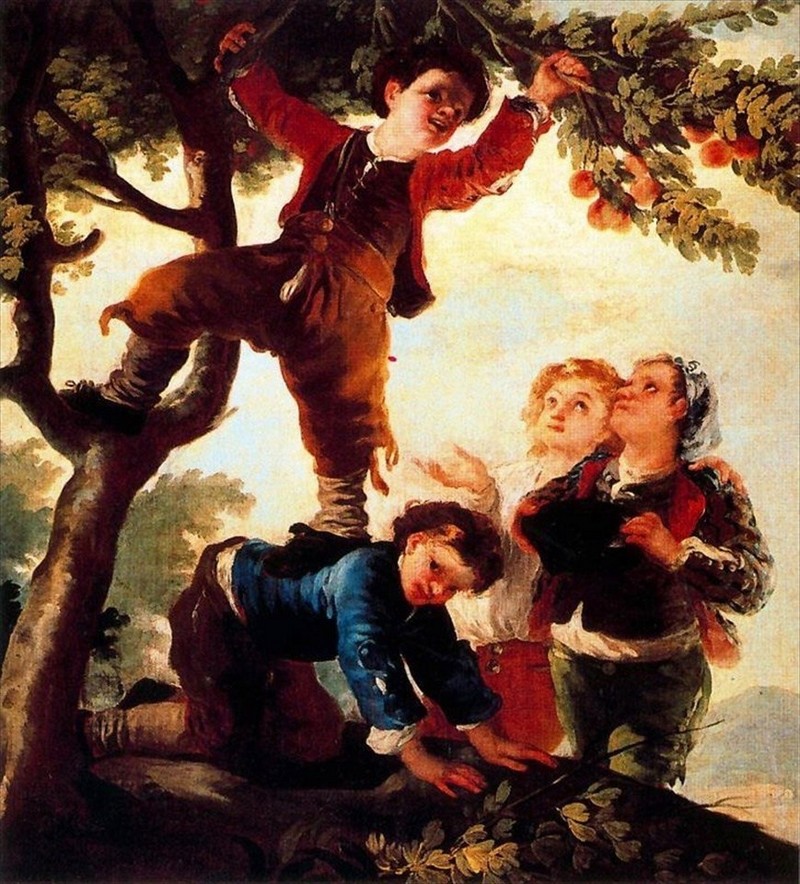
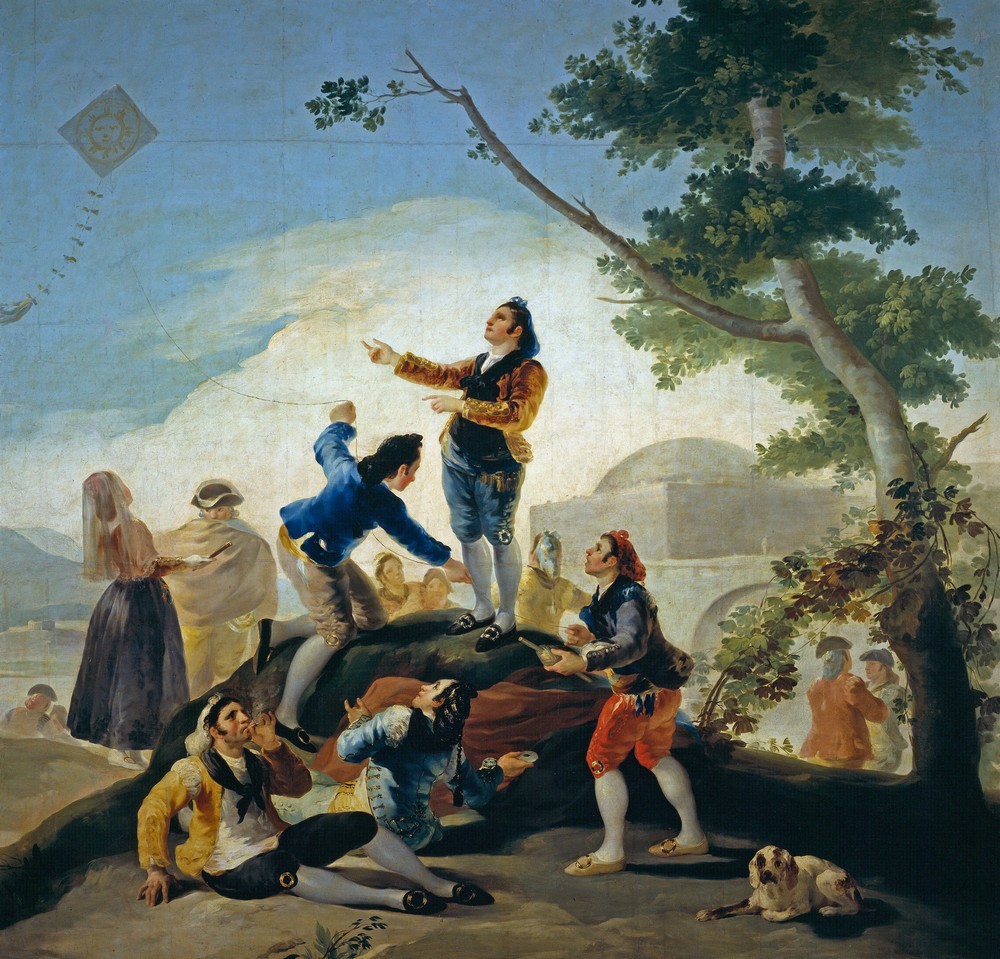
In 1793, an unknown disease left Goya deaf. Although he still accepted commissions from his royal clients, the disease was a dark turning point in his life and art. It is possible to notice that in “The Yard of a Madhouse” (1794) the bodies are bent, people scream in agony. The difference between this painting and the tapestries is shocking.
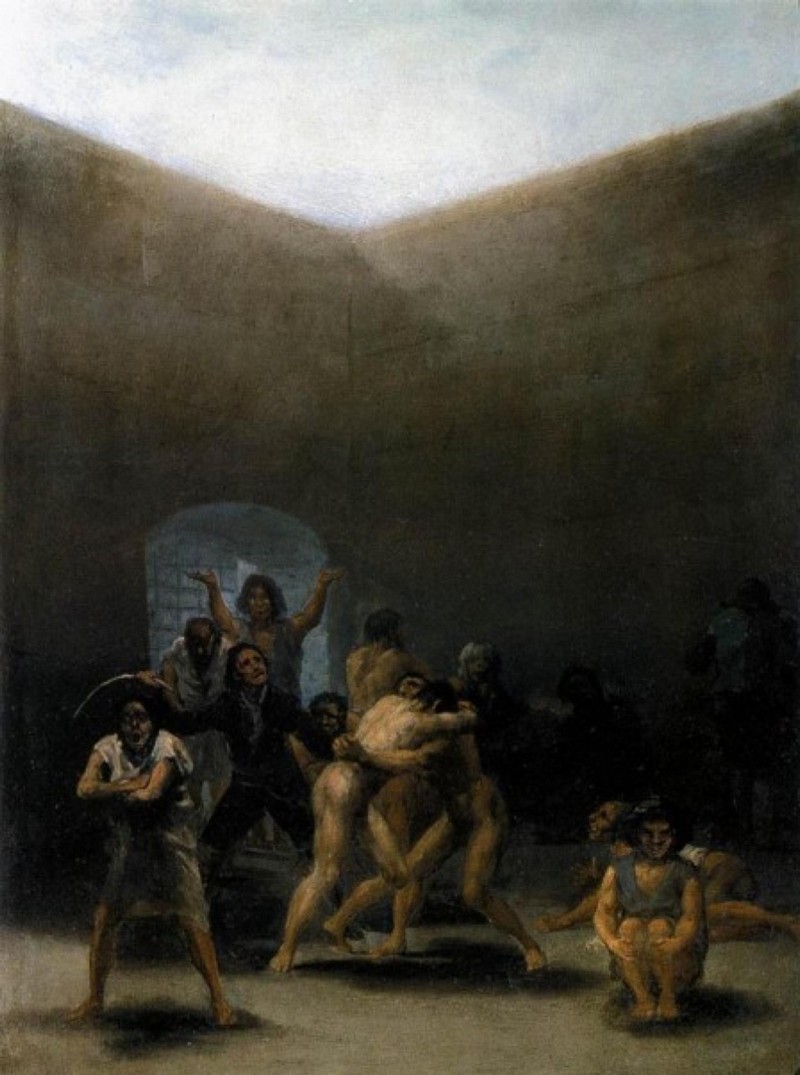
His hearing disappeared, Goya began to see the country with grim clarity. In a series of engravings called Los Caprichos, he shows Spanish culture in both tragic and comical ways. As a student of the Enlightenment, Goya sees a country retreating from its path of development. The King is gone, and people are superstitious and too stupid to understand what they need.
The work traces the search for anatomical authenticity, the need for social criticism, and obsession with creatures and monsters. All of this is summed up in an engraving with the apt title “The Sleep of Reason Produces Monsters”.
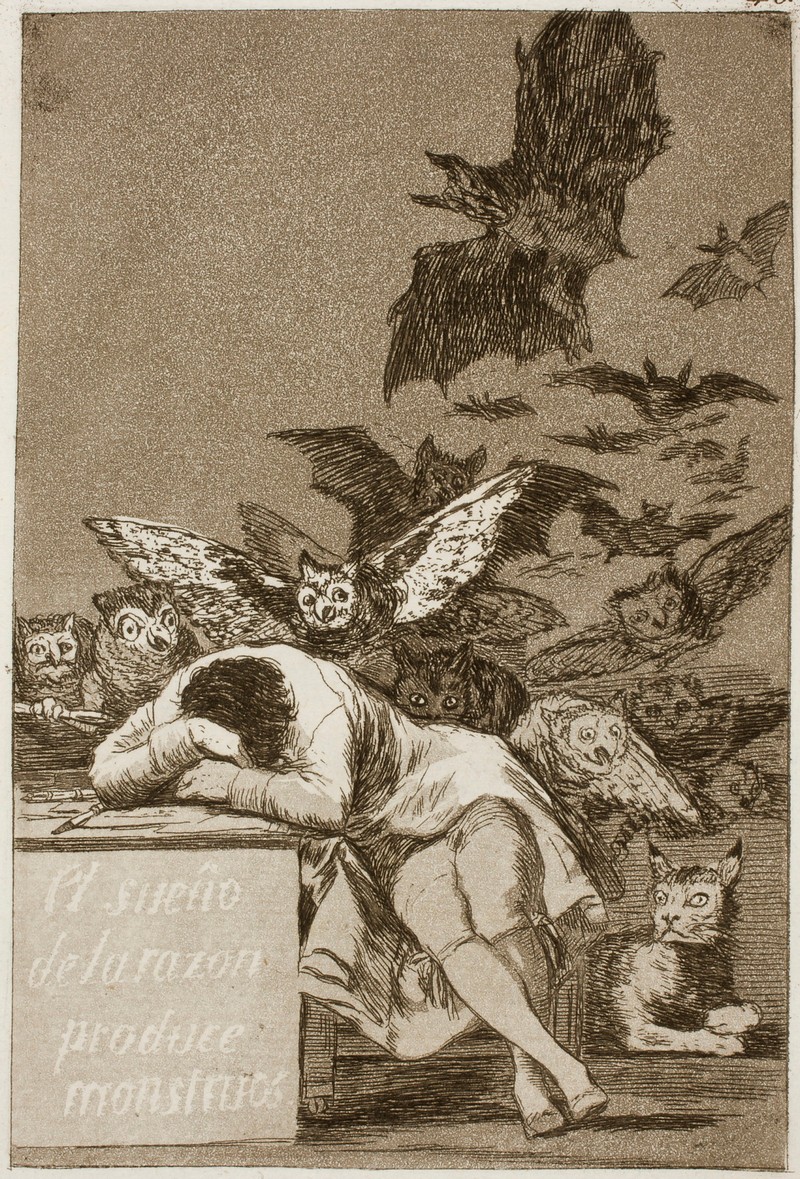
In subsequent years, the situation in Spain deteriorated. Napoleon invaded the country and severely punished those who resisted his arrival. Goya witnessed the bloodshed, which deeply affected him. On this subject his painting “The third of May 1808 in Madrid”. It contains a frank description of war, rebellion and cruelty. Before that, the war in painting was a complex theatrical plot. Here Goya shows nothing but brute force. This is an emotion, transmitted without the mediation of art.
It will take five years before Spain takes the throne again. During the period of resistance, the Constitution of 1812 (the Constitution of Cadiz) was issued, calling for liberal reforms, national sovereignty, freedom of the press, and free enterprise. But, having gained power, the new King Ferdinand VII canceled the constitution and arrested its creators. Goya shut himself up and was disappointed. The country, which in his young years was moving towards a new world, was again absorbed by absolutism.
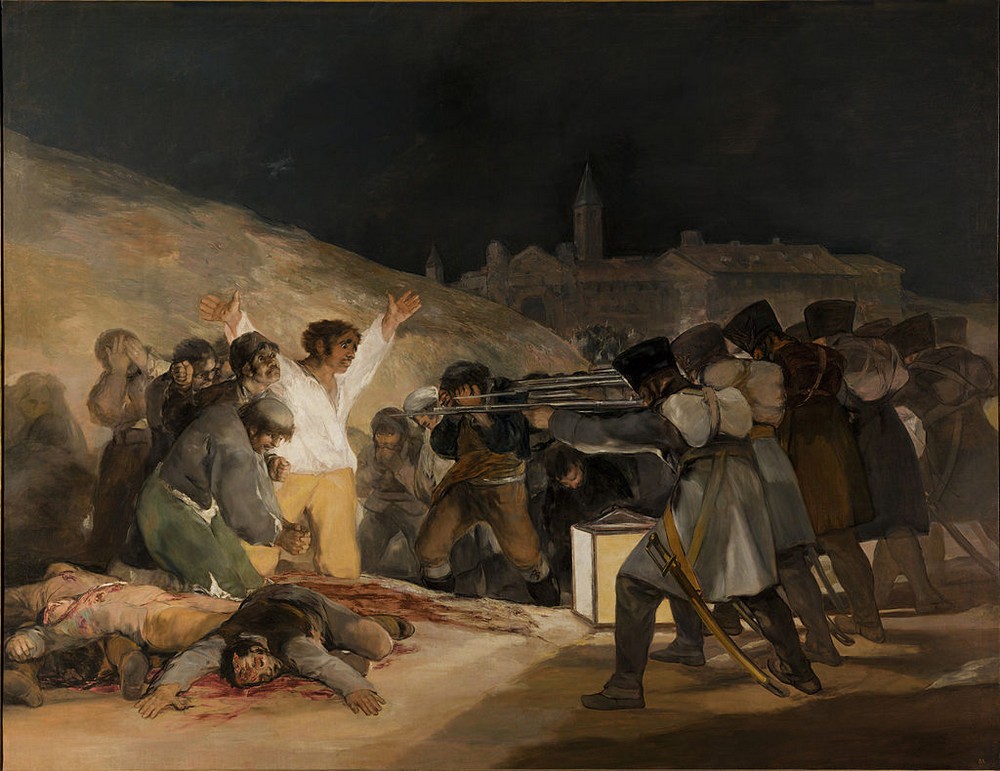
Disfigured by war, disfigured by illness, he began to draw nightmare scenes on the walls of his house. There is a young man, devoured by his father, who is destined to be usurped by his son. Now Goya already knows that progress is not guaranteed, and when he is amazed, it is not painless. It is terrifying and slow, and the victim can feel what is happening.
There are many ways to read the painting “Saturn devouring his son”. It is possible that Goya tried to banish demons from his mind or demons from his country. Or maybe he was trying to speak honestly about one horrific aspect of human nature, using the skills and methods he had studied, created and applied throughout his life.
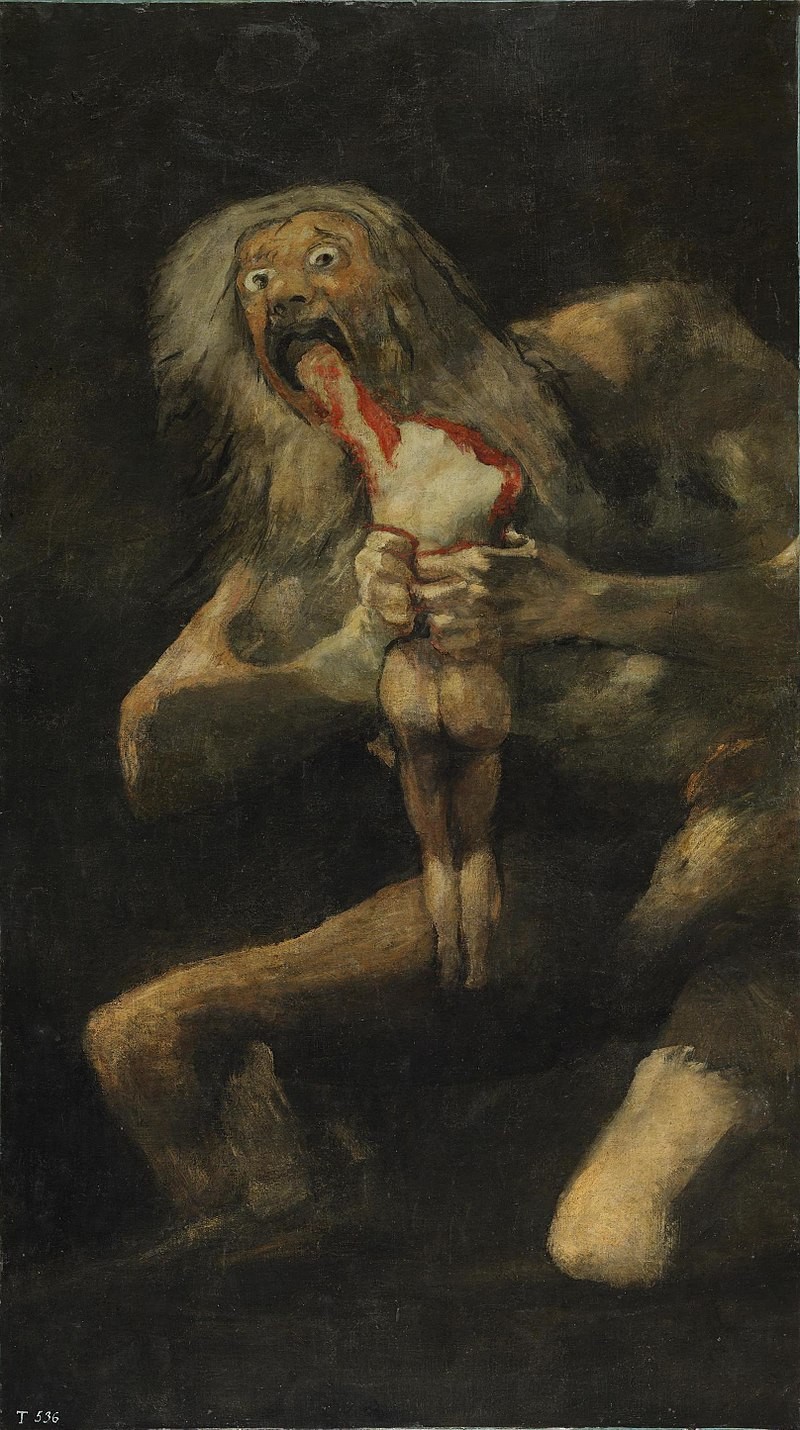
“Black Paintings” changed the history of art, but perhaps the scariest thing is that Goya doesn’t care. He doesn’t care how we read this painting, because he didn’t paint it for us or for anyone else. “Saturn devouring his son” exists beyond interpretation. It is a brutal force. Terror without mediation. A monster looking out from a dark wall in a dark room… starving……






